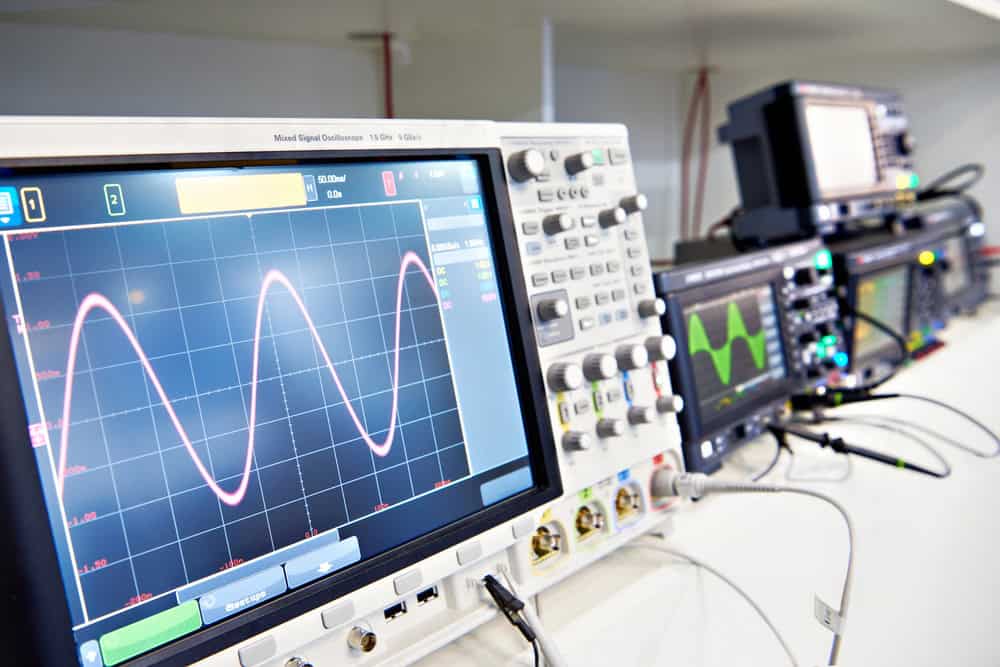In the rapidly evolving world of electronics, engineers and designers face increasingly complex systems that integrate both analog and digital components. To properly test and troubleshoot these sophisticated systems, the need for precise, versatile testing equipment has never been greater. This is where a mixed signal oscilloscope (MSO) comes into play.
A mixed signal oscilloscope is an advanced testing tool that combines the capabilities of both an analog oscilloscope and a digital logic analyzer, enabling engineers to measure and analyze both analog and digital signals simultaneously. In this blog, we’ll explore the key benefits of MSOs and why they are indispensable in modern electronics testing.
What Is a Mixed Signal Oscilloscope?
A mixed signal oscilloscope is designed to capture and display both analog and digital signals at the same time, allowing for comprehensive analysis of complex systems. It typically features multiple analog channels for waveform analysis and multiple digital channels for inspecting logic signals. MSOs are commonly used in the development, testing, and debugging of embedded systems, communication devices, and other mixed-signal electronic systems.
Key Benefits of Mixed Signal Oscilloscopes
- Simultaneous Analog and Digital Signal Analysis
One of the most significant advantages of a mixed signal oscilloscope is its ability to capture both analog and digital signals at the same time. In today’s electronics, many systems integrate analog and digital components, such as microcontrollers, sensors, and communication interfaces. MSOs enable engineers to view both signal types on the same screen, making it easier to diagnose issues and ensure the system is functioning as expected.
- Time-Saving and Cost-Effective
Before the advent of MSOs, engineers had to rely on separate tools to analyze analog and digital signals, such as an analog oscilloscope and a separate logic analyzer. This not only required more equipment but also increased the time spent switching between instruments and performing tests. By combining both functionalities into one device, a mixed signal oscilloscope helps save time, reduce setup complexity, and lower overall costs by eliminating the need for multiple pieces of equipment.
- Enhanced Debugging Capabilities
MSOs provide a more comprehensive view of a system’s performance. Engineers can observe both the analog waveform and the corresponding digital signals in real time, making it much easier to identify timing errors, glitches, or other issues that might affect system performance. With the ability to simultaneously capture high-speed digital and analog data, MSOs help engineers quickly isolate problems that would otherwise be difficult to diagnose.
- Greater Flexibility for Complex Systems
Modern electronics are increasingly relying on complex systems that integrate various signal types. A mixed signal oscilloscope is especially beneficial for testing such systems, as it allows engineers to analyze everything from low-frequency analog signals to high-speed digital communications. This flexibility makes MSOs essential in industries like automotive electronics, telecommunications, medical devices, and consumer electronics, where systems are often a blend of both analog and digital components.
- Advanced Triggering and Analysis Features
MSOs come equipped with advanced triggering capabilities that allow engineers to capture specific events in the signal under test. Triggering can be based on analog, digital, or even combination signals, enabling more precise analysis. This is especially important in debugging complex systems where timing and sequence of events are critical. With MSOs, engineers can focus on particular signal conditions and capture rare or transient events that might be missed with other tools.
- Improved Efficiency in System Design and Validation
For engineers working on system design and validation, MSOs offer an invaluable tool for verifying that the system is performing according to specifications. By viewing both analog and digital signals simultaneously, designers can ensure the integrity of the entire system. This leads to quicker prototyping cycles and more reliable designs that meet both analog and digital performance requirements.
Why Choose the Tektronix 5 Series MSO?
If you’re looking for a top-tier mixed signal oscilloscope for your testing and analysis needs, the Tektronix 5 Series MSO is an excellent choice. The Tektronix 5 Series MSO delivers a high-performance, user-friendly experience with up to 1 GHz bandwidth, fast sample rates, and a high-resolution touchscreen for intuitive operation. It is designed to meet the needs of engineers and researchers working with complex, mixed-signal systems.
To explore more about the mixed signal oscilloscope features and pricing, visit this link for more information on the Tektronix 5 Series MSO.
Conclusion
A mixed signal oscilloscope is a powerful tool that is essential for modern electronics testing. It offers the convenience of analyzing both analog and digital signals simultaneously, saving time, enhancing debugging capabilities, and providing the flexibility needed for testing complex systems. Whether you’re designing a new product or troubleshooting an existing one, a mixed signal oscilloscope is an invaluable asset for any engineer.
For the best in mixed-signal testing equipment, visit eFocus Instruments, where you can find top-of-the-line tools like the Tektronix 5 Series MSO to support your testing and analysis needs.







